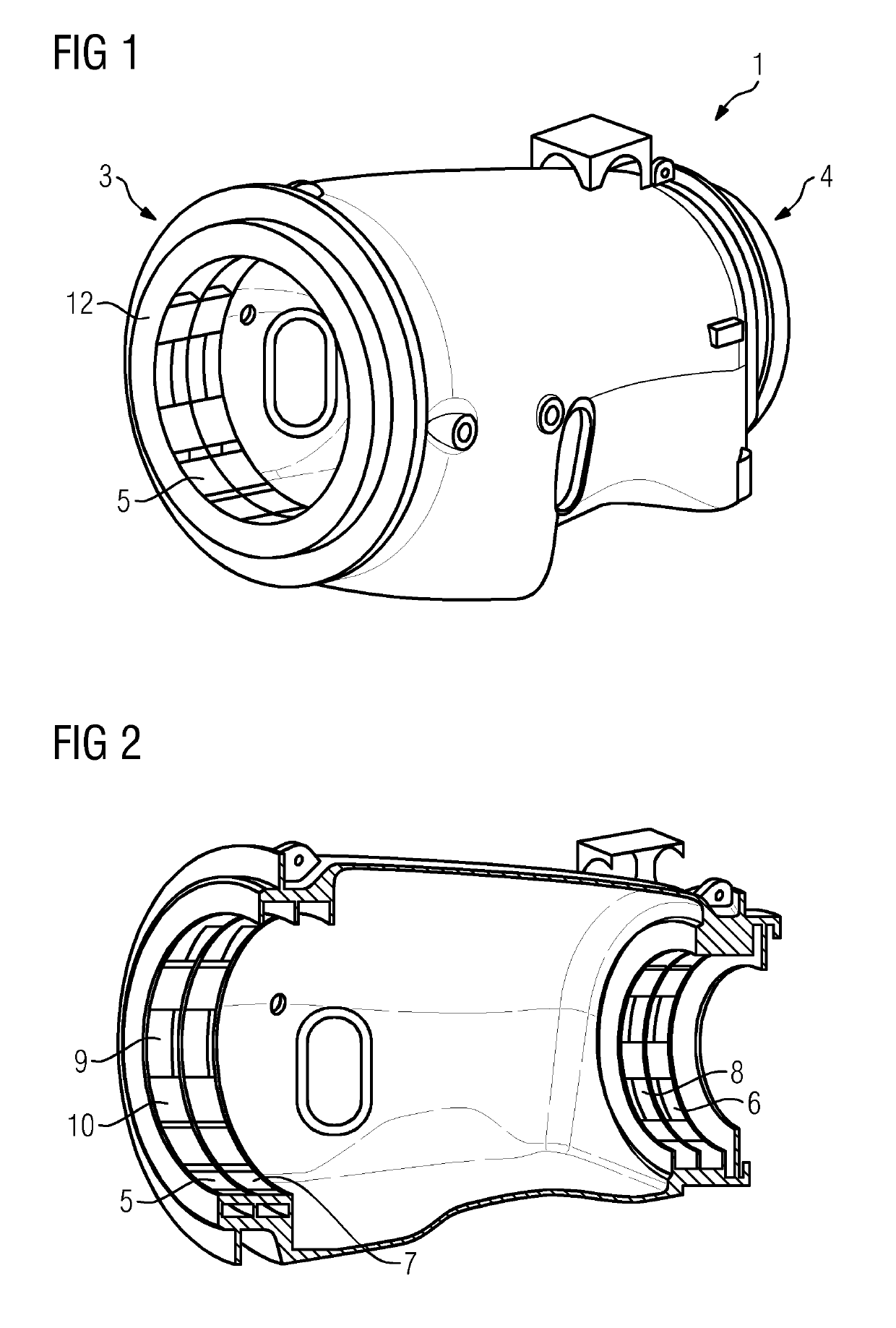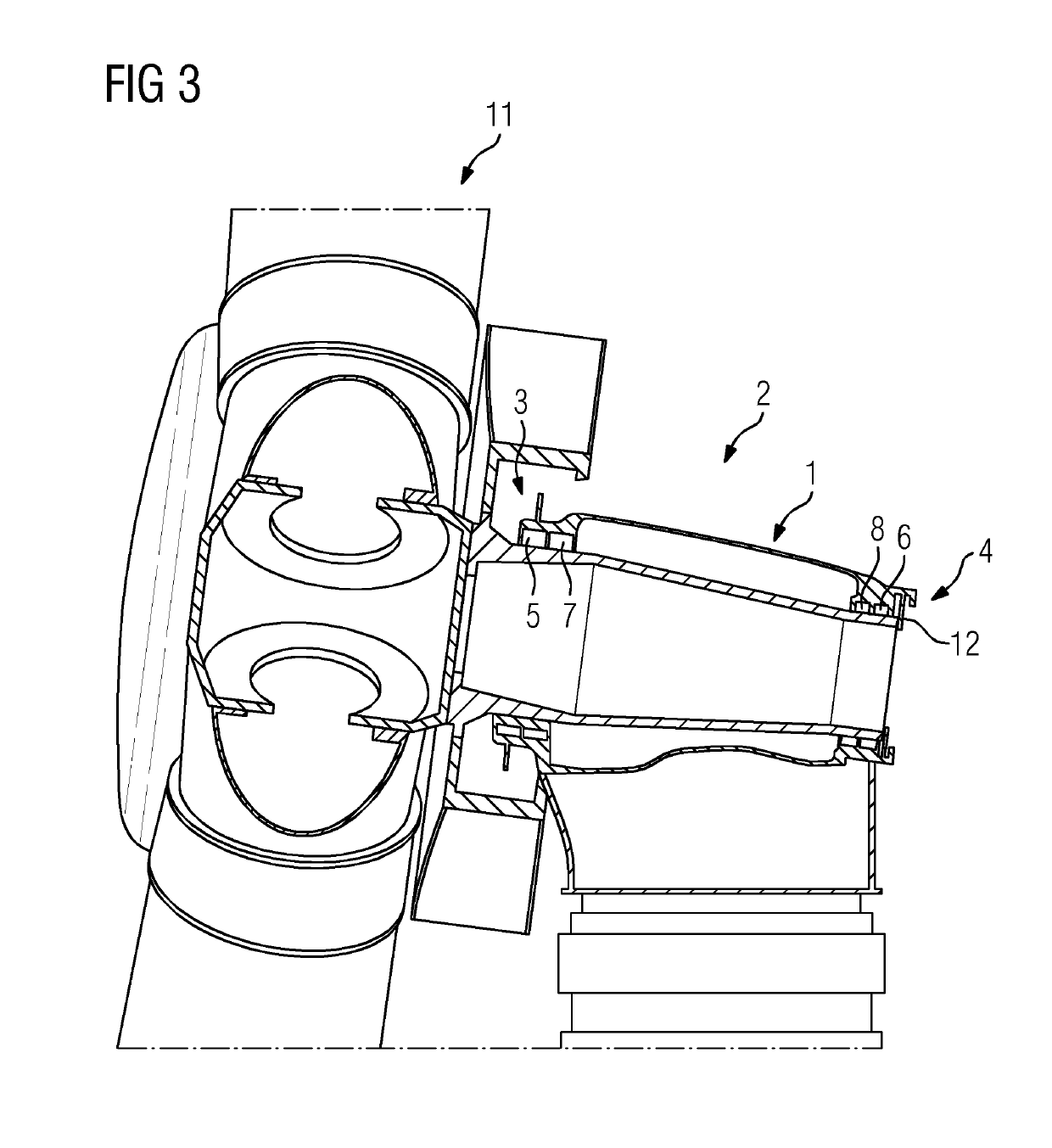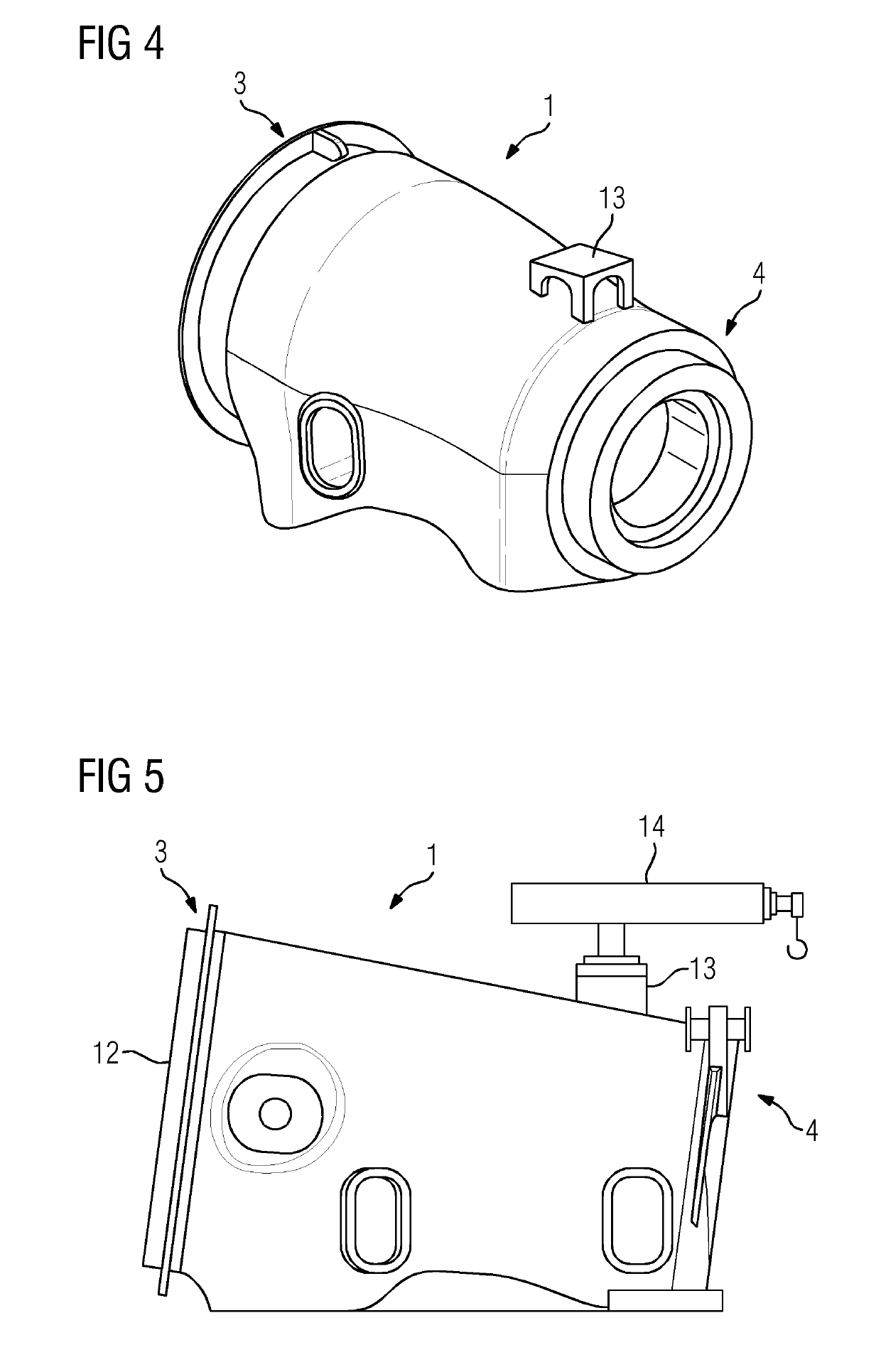Wind turbine, bearing housing and method for operating a wind turbine
a technology for wind turbines and bearings, applied in the direction of bearing repair/replacement, bearing unit rigid support, final product manufacturing, etc., can solve the problems of reducing maintenance and service costs, removing or re-using main bearings, and a large number of main bearings. the effect of failure or damage can be reduced, time and cost-intensiv
- Summary
- Abstract
- Description
- Claims
- Application Information
AI Technical Summary
Benefits of technology
Problems solved by technology
Method used
Image
Examples
Embodiment Construction
[0043]FIG. 1 shows a perspective view of a bearing housing 1 for a wind turbine 2, which is depicted in FIG. 3. The bearing housing 1 comprises a first bearing group 3 and a second bearing group 4, being axially spaced. The first bearing group 3 and the second bearing group 4 each comprise a primary bearing setup 5, 6 and secondary bearing setup 7, 8.
[0044]As can best be seen in FIG. 2, the primary bearing setup 5 and the secondary bearing setup 7 as well as the primary bearing setup 6 and the secondary bearing setup 8 abut each other axially. Therefore the pivot points for the rotor shaft (not shown) are similar independent of the use of the primary bearing setups 5, 7 or the secondary bearing setups 6, 8.
[0045]The bearing setups 5, 6, 7, 8 comprise notches 9 that are circumferentially arranged and able to receive bearing means or bearing, for example a fluid bearing. In case of sliding bearings exchangeable pads 10 can be received in the notches 9 and can be exchanged in case of p...
PUM
 Login to View More
Login to View More Abstract
Description
Claims
Application Information
 Login to View More
Login to View More - R&D
- Intellectual Property
- Life Sciences
- Materials
- Tech Scout
- Unparalleled Data Quality
- Higher Quality Content
- 60% Fewer Hallucinations
Browse by: Latest US Patents, China's latest patents, Technical Efficacy Thesaurus, Application Domain, Technology Topic, Popular Technical Reports.
© 2025 PatSnap. All rights reserved.Legal|Privacy policy|Modern Slavery Act Transparency Statement|Sitemap|About US| Contact US: help@patsnap.com



